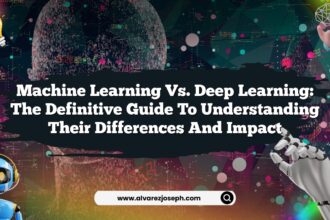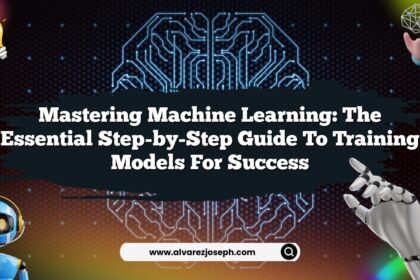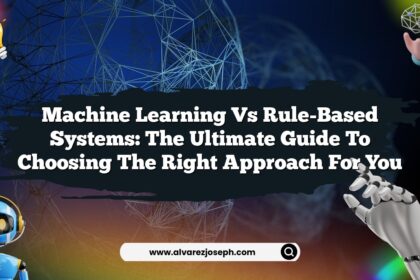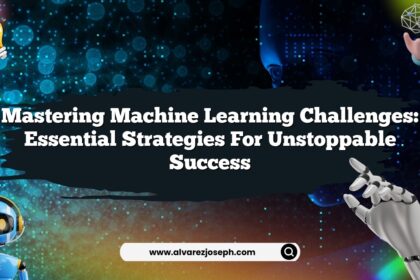Ever wondered why your smartphone seems to know you better than your best friend? Or maybe you’ve been baffled by how Netflix always suggests that perfect Friday night flick? Welcome to the world of machine learning, where algorithms serve as the unsung heroes behind these modern marvels. But before we dive deep into this fascinating topic, let’s stir up some curiosity. Imagine a world where AI not only anticipates your needs but also learns from your emotions, adapting itself to your mood swings. Could that be our future? Stay tuned, because this is just the tip of the iceberg.
What Exactly is Machine Learning?
First things first, let’s unravel the enigma behind the term "machine learning." In simple terms, it’s a subset of artificial intelligence where machines are programmed to learn from experience—just like humans! Picture it as a smart cookie that absorbs information and self-improves over time without being explicitly programmed to do so. Now, isn’t that something?
Machine learning employs algorithms to parse data, learn from it, and make predictions or decisions. It’s the brain behind applications like voice recognition, image analysis, and even predicting financial markets. Fascinating, right? But how does it actually work?
How Does Machine Learning Work?
At its core, machine learning involves algorithms that learn from data. Think of it as baking a cake: you start with ingredients (data), follow a recipe (algorithm), and end up with a tasty treat (predictions or decisions). But instead of flour and sugar, you have datasets, and instead of ovens, you have powerful computers crunching numbers.
There are three main types of machine learning:
-
Supervised Learning: Much like a teacher supervising students, here the algorithm learns from labeled data. For example, feeding an algorithm images of cats and dogs with labels helps it identify them in new pictures.
-
Unsupervised Learning: Imagine exploring a new city without a map. This type involves finding hidden patterns in unlabeled data—like discovering new clusters or groups within a dataset.
-
Reinforcement Learning: It’s all about learning from mistakes. The algorithm learns by trial and error, much like how we learn to ride a bicycle—fall off, get back up, adjust, and repeat until we master it.
Why is Machine Learning Important?
Machine learning has transformed the way industries operate, offering automation, efficiency, and innovation. From healthcare to finance, its applications are endless. Just think about how self-driving cars are reshaping the future of transportation or how personalized medicine is revolutionizing healthcare. These advancements are not just buzzwords—they’re the new reality.
Machine learning also enhances customer experience. It powers recommendation systems that predict what you’d like to watch next on Netflix or which products might pique your interest on Amazon. It’s like having a personal shopper who knows your tastes!
The Challenges of Implementing Machine Learning
It’s not all sunshine and rainbows, though. Implementing machine learning comes with its own set of challenges. Data quality is paramount. Garbage in, garbage out, as they say. If the data fed into the algorithm is flawed, the outcomes are bound to be inaccurate.
Moreover, machine learning models require constant tuning and updating. They need to adapt to new data and changing environments. Privacy concerns also pose significant challenges as machine learning often involves handling sensitive data. It’s a delicate balancing act between innovation and privacy.
Machine Learning in Everyday Life
Let’s step back and look at how machine learning has seamlessly integrated into our daily lives. Ever wondered how your email filters spam messages? Or how your smartphone assistant understands your voice commands? That’s machine learning at work!
-
Email Filtering: Algorithms learn to differentiate between spam and legitimate emails based on patterns and past interactions.
-
Voice Assistants: Whether it’s Siri or Alexa, these assistants leverage machine learning to understand and process human speech, learning to get better with each interaction.
-
Social Media Feeds: Ever noticed how your social media feed is finely tailored to your interests? Machine learning algorithms analyze your behavior to show you content you’re most likely to engage with.
Machine Learning: The Future Landscape
Now, let’s visualize a world where machine learning continues to evolve, breaking new grounds. Imagine AI systems that not only respond to queries but also predict the unspoken needs of users. A world where healthcare is so personalized that treatments are tailor-made for your genetic makeup.
This future isn’t as far-fetched as it seems. With advancements in deep learning and neural networks, machines are getting closer to mimicking human thought processes. Autonomous machines, smarter than ever, could become our everyday companions. But how will this affect our jobs, our privacy, or even our humanity? Only time will tell.
Quick Summary
- Machine Learning is a branch of AI that focuses on learning from data.
- Algorithms are the backbone, with types like supervised, unsupervised, and reinforcement learning.
- It transforms industries by providing automation and personalized experiences.
- Challenges include data quality, privacy concerns, and the need for constant model updates.
- It’s already a part of our daily lives through email filtering, voice assistants, and social media.
- The future holds even more promise, especially with deep learning and neural networks.
Frequently Asked Questions
What is the difference between AI and machine learning?
While artificial intelligence is the broad concept of machines carrying out tasks in a way that we would consider "smart," machine learning is a subset focusing specifically on enabling machines to learn from data.
How is machine learning used in healthcare?
Machine learning aids in predictive analytics, personalized medicine, and medical image analysis, helping improve diagnostics and treatment plans.
Can machine learning models be biased?
Yes, if the data they learn from is biased, the models can also be biased. Ensuring data diversity and fairness is crucial to mitigate this.
How can I start learning about machine learning?
Begin with online courses or tutorials that cover the basics, such as Python programming, statistics, and introductory machine learning concepts.
What are neural networks?
Neural networks are a series of algorithms that mimic the operations of a human brain to recognize relationships between vast amounts of data.
Is machine learning the same as deep learning?
Deep learning is a subset of machine learning that utilizes neural networks with many layers, allowing for complex data modeling and greater accuracy in tasks like image or speech recognition.
And there you have it—a whirlwind tour through the captivating world of machine learning. It’s a field that’s constantly evolving, promising a future filled with innovation and possibilities. So, how do you see machine learning fitting into your life? Would you trust it to make significant decisions for you? Only you can decide.












